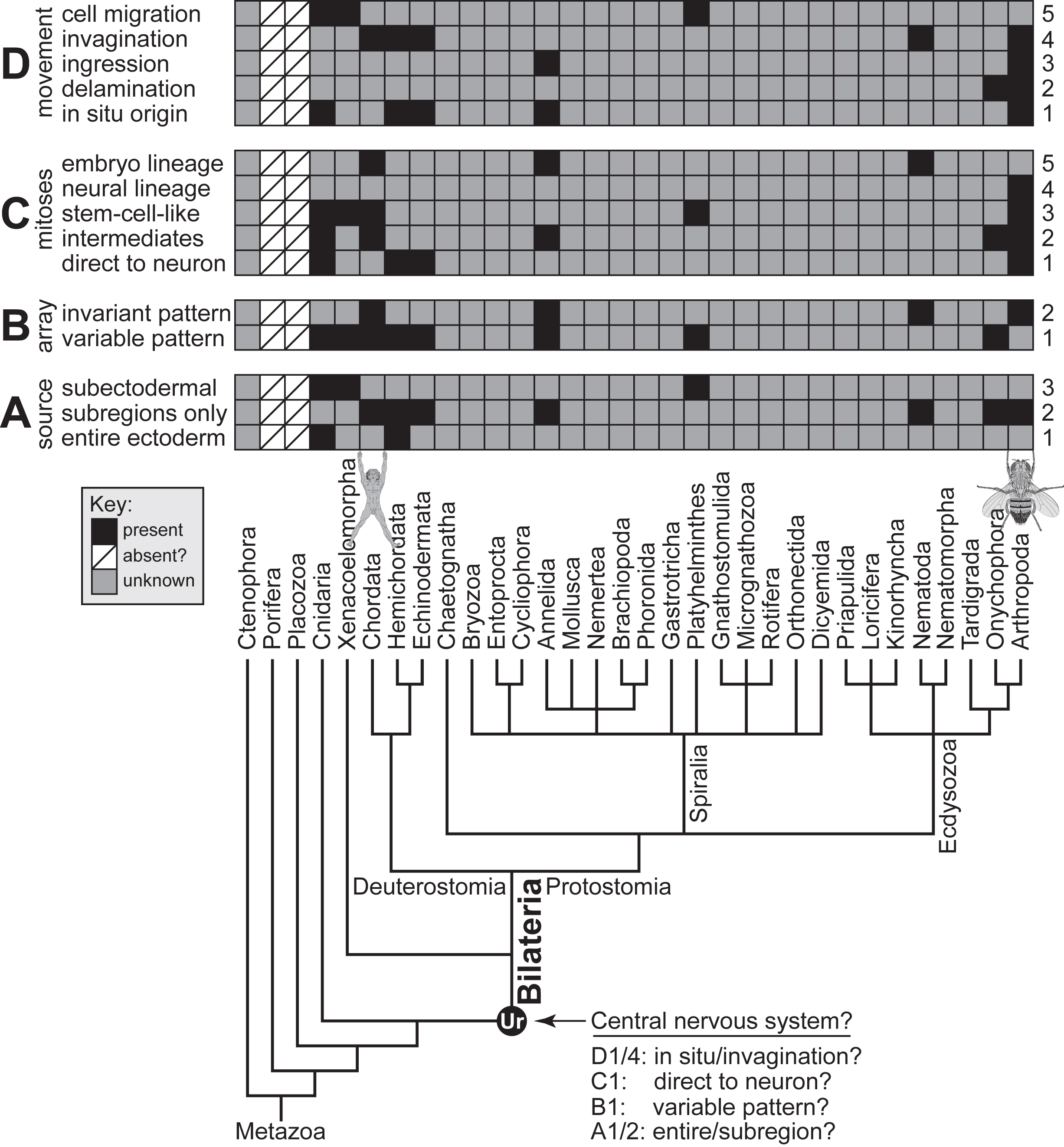

Deep Homology?
  |
Deep Homology? |
 Styles of neural development among animal phyla. The four-part classification scheme presented here was devised by Volker Hartenstein and Angelika Stollewerk. Styles of neurogenesis are categorized in terms of: A (whether neurons come from the entire ectoderm, from subregions thereof, or from cells beneath it), B (whether or not neural progenitors always arise in the same pattern), C (whether neural progenitors make neurons directly or indirectly via intermediates, whether the intermediates divide in a stem-cell-like way, and whether neurons follow a strict pedigree from their progenitors or within the embryo as a whole), and D (whether neurons stay superficial or move inside via delamination, ingression, invagination, or migration). Black squares signify usage of the designated style in at least some members of the indicated phylum, slash marks denote its absence in all species examined thus far, and gray squares mean that available data are insufficient to draw any conclusion (see key). To see how this scheme works, consider the chordate column. It was compiled as a pooled composite of cephalochordates (A2, B1, C2, D4), urochordates (A2, B2, C5, D4), and vertebrates (A2, B2, C2/3, D4). Indeed, it is remarkable that urochordates build basically the same CNS as vertebrates via a derived (nematode-like) fixed-lineage (C5) mechanism. Likewise, different groups of arthropods reach the same endpoint by entirely distinct origami tactics. The conjectured parameters of the urbiliaterian nervous system (bottom right) are inferred from the above distributions. Letters are classes (upper left), and numbers are subclasses (upper right), with slash marks indicating ambiguity. |
|
Introduction: cover image Body axes: figure 2 | figure 3 | figure 4 | figure 5 | figure 6 Nervous system: figure 7 | figure 8 Vision: figure 9 | figure 10 | figure 11 | figure 12 | figure 13 Touch and hearing: figure 14 | figure 15 Smell and taste: figure 16 Limbs: figure 17 Epilogue: figure 18 The Interactive Fly resides on the web server of the Society for Developmental Biology. |